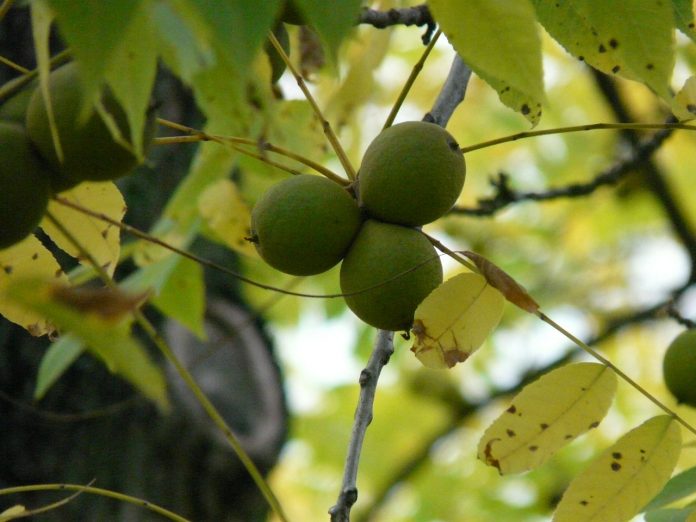Black walnuts begin to drop during midsummer and continue through early fall. You may have already noticed some bright green round fruits that have fallen into or alongside a road. More will follow in the coming months, as black walnuts are found in abundance across the Midwest.
Although you will have to gather, hull and shell black walnuts to enjoy the nutmeats, for many, the rich flavor is worth it. Learn where to look for walnut trees and how to gather their fruits to get them before the squirrels do.
Where to find black walnuts
Black walnut trees are found throughout the Midwest, growing along the edges of forests to gain maximum sunlight. In addition to preferring full sun, walnut trees prefer deep, moist, rich, well-drained soil. They grow most abundantly along stream banks, along watercourses, in bottomlands and open fields. However, they can be found all over thanks to squirrels burying and forgetting about its nuts.
Black walnut trees can grow to reach a height of 100 feet; however, most top out at 50-70 feet. Their bark is a deeply furrowed charcoal grey. Their long alternate, compound leaves can have up to 23 smooth oval leaflets. Their fruits are easily identified, as they are surrounded by a thick outer husk — green in appearance before ripening and yellow-black when mature.
Gathering black walnuts
Collecting black walnuts is as simple as carrying a 5-gallon bucket and picking up what’s dropped off the tree. But if it’s your first season, these pro tips may be helpful:
- Wear gloves while gathering black walnuts. Although the hulls are often green, yellow, black or a combination of those colors, they will permanently stain everything they touch black if the outer skin of the hull is damaged.
- Gather ripe yellow walnuts, walnuts with dried, black hulls and unripe walnuts with green hulls. You can let the walnuts with green hulls ripen in a bucket, away from the squirrels.
- Don’t panic if there are worms in the hulls. They are hull maggots and don’t penetrate the walnut’s shell inside.
- Try to harvest walnut fruits soon after they fall to the ground to avoid mold.
- Harvest more frequently from September through October when the largest volume of walnut fruits will come into maturity.
- If hulls are firm and difficult to remove when you get ready to process what you’ve harvested, set them aside for a few days to soften.











There are plenty over-ripened walnuts on the ground, with squishy black husks that slough off easily, leaving the wet black nut inside. Can I still use these?
Cathy
You can test them using the steps below to see if they are still good.
Remove husks.
Place nuts in a bucket of water.
Discard floating nuts.
Save nuts that sank to the bottom.
Crack open the nuts you have left to determine viability. Viable nuts have white, solid meats; non-viable nuts have beige, shriveled kernels that are watery or give off a foul odor.